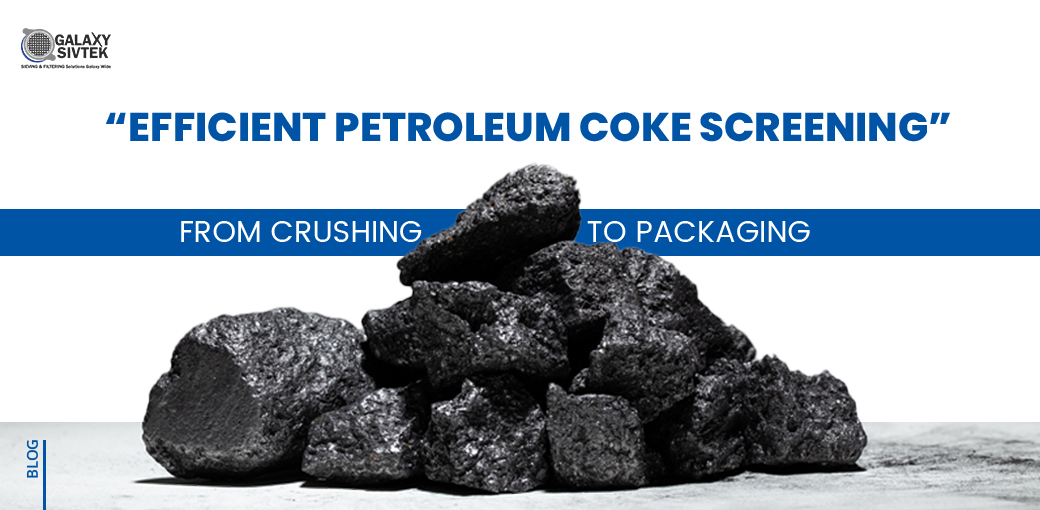
Committed To Quality, Committed To You
Petroleum coke, commonly known as petcoke, is a byproduct of the oil refining process that has carved out a significant niche as both a fuel and an industrial raw material. Petcoke plays an important role across a variety of applications, from fuel in a cement kiln to a key component of aluminum manufacturing. However, prior to consumption, petcoke has to comply with certain standards of size and purity. By using proper screening systems, industry can ensure product quality and consistency, improve processing, and reduce waste. We can look at how petcoke is produced, reasons for the industrial use of petcoke, and the connection between screening and its various applications.
Petroleum coke is created during the delayed coking process in oil refineries. When heavy residual oils are subjected to high temperatures, they undergo thermal cracking, which removes lighter hydrocarbons and leaves behind a carbon-rich solid — petcoke. This hard black material is gathered in granule and powder forms and processed according to the end-use application. Depending upon the process so employed, the quality and granule size might be different.
Petcoke is available in two primary forms:
Thanks to its high carbon content and energy value, petcoke is perfect for industries that rely heavily on combustion. However, to ensure optimal performance in these applications, it must be free from fines, oversized lumps, or contaminants, making precise screening absolutely essential.
Screening plays a vital role in making sure that petcoke meets the required particle size and purity standards for its various uses. If we skip proper sieving, oversized particles or fine dust can disrupt downstream processing, damage equipment, or lead to inconsistencies in combustion or smelting. For calcined petcoke, slight size differences can impair electrode performance. Screening also improves safety by reducing dust and contamination during material handling. Whether it’s about sorting granules for consistent feeding or making sure only the correctly sized particles head to packaging, a dependable screening system is key for industries to uphold quality and efficiency. It is not just about sorting, but also about ensuring the behaviours of the material in sometimes difficult industrial environments.
The sieving process for petroleum coke generally involves three main stages in the production and handling line:
1. Post-Crushing Screening:
Once petcoke is crushed into smaller granules, it moves through our Super Gyro Separator. This crucial step eliminates any oversized particles and sorts the material into specific sizes. This is a very important step when they are used by cement manufacturing because in combustion of cement the granule size has effect on the rate of combustion.
2. Pre-Calcination Screening:
Before the raw petcoke heads into a calciner, we make sure that only the right size particles make the cut. Having uniform particle sizes is key to ensuring even heating during the calcining process, which boosts thermal efficiency and product output. While having pneumatic transfer, a Vibro Separator can do the screening real-time in the line itself so as not to disturb flow.
3. Post-Calcination Screening:
Calcined petcoke often generates fines and dust during handling. A final screening step is used here to remove undersized particles or any contamination before packing or feeding to the next system. For this purpose, depending on whether the process is open or enclosed, our inline sifters are most commonly used.
Choosing the right sieving equipment ensures smoother processing, reduced wear and tear on machinery, and consistent final product quality — all of which are essential for petcoke applications across industries.
When it comes to petroleum coke, consistency prevails, and screening is its first step. Whether you’re dealing with fuel-grade or calcined petcoke, our sieving solutions can help you get the job done right. Talk to our experts today and optimize your process.
